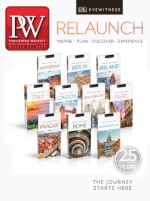In July, the New York Times travel section published my story about Buenaventura, Colombia, a port city on the Pacific that, until just a few years ago, was thought to be too violent for travelers. But after a government crackdown, it had become safe enough to warrant a visit to experience the Afro-Colombian culture that thrives there.
The resulting article told of strange shellfish cooked in unusual herbs, a motorbike-train mash-up called a brujita that shuttles visitors to a magical nature reserve, and plenty of viche, an artisanal sugar cane liquor. (By “artisanal,” I mean made in the mountains by sixth-generation distillers descended from African slaves, not in Brooklyn by first-generation hipsters descended from white suburbanites.)
People in Buenaventura were thrilled with the piece. Their city was on the map! Tourists would flood in! If so, great, but that was not the purpose of my piece—and I hope readers don’t take my specific choices too literally. There’s no need to try Rosana Angulo’s achiote-tinged piangua clams at stall number six of the Pueblo Nuevo Market rather than her seafood stew, or the clams at stalls five or seven, just because I did. That’s not travel; that’s dictation.
In my forthcoming book, Rediscovering Travel: A Guide for the Globally Curious, I drop any semblance of recommending destinations and instead encourage travelers to make discoveries on their own. By “discoveries,” I don’t mean the Christopher Columbus kind; I mean the feeling you get when you have no idea what’s going to happen next, and then it happens. That could be stumbling across a 16th-century monastery that’s not in your guidebook, or taking a chance on a Jamaican lunch counter and finding, to your surprise, that you like stewed cow kidney.
I try to write about travel accordingly, nudging people to travel differently—to stop relying on bucket lists and tightly planned days and user reviews, and to start experiencing places without vetting them first on Yelp or Google Maps. I can’t prevent everyone from following precisely in my footsteps, but I try to discourage as many as I can, largely by being honest: I question my own taste, write openly about my goof-ups, and avoid superlatives, because how can I know if it’s the best pizza in town if I haven’t tried all the pizza in town?
Sometimes, I’m more explicit. After visiting a private park in Chile’s Chiloé archipelago, I once wrote: “I can only halfheartedly suggest that Chiloé-bound travelers put Parque Yayanes on their list. It’s far better found by accident.”
My hope is that readers come away from my writing with a deeper knowledge and piqued curiosity about a place, and an eagerness to seek out overlooked destinations no matter where they go. If one later decides to, say, spend an afternoon in London wandering an area of the city previously perceived to be dangerous, I consider that a far greater victory than another reader who heads to Buenaventura in search of the very same clams—and waterfalls and cocktails and beaches—that I described.
Seth Kugel is the author of Rediscovering Travel: A Guide for the Globally Curious (Liveright, Oct.). He hosts the Globally Curious YouTube channel and was the “Frugal Traveler” columnist for the New York Times from 2010 to 2016.



 Volume 265
Issue 33
08/13/2018
Volume 265
Issue 33
08/13/2018





